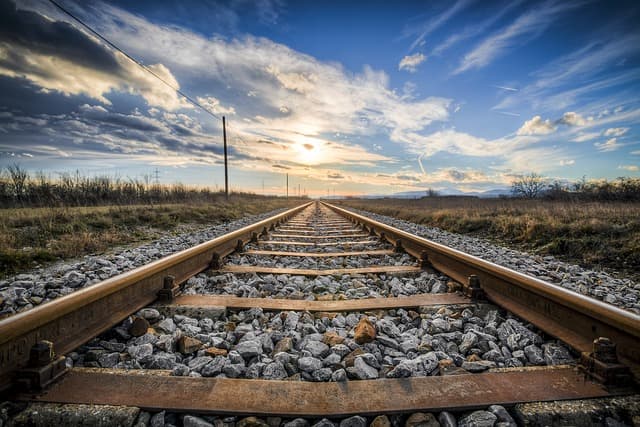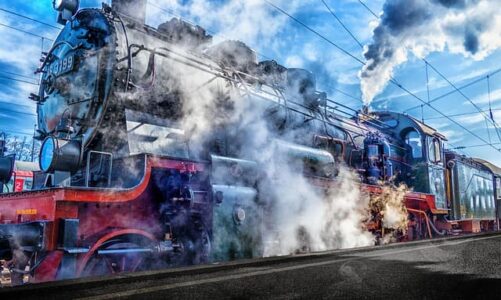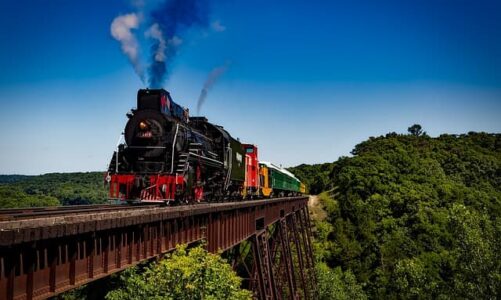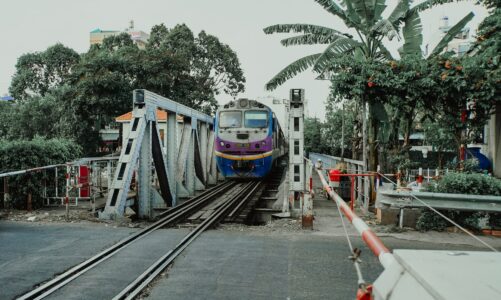From one end of the country to the other, the U.S. has the largest freight rail system in the world. Together, the U.S. steel highways form a well-organized system of 140,000 miles (more than 225,000 km) that earned about $80 billion in revenue in 2019. U.S. railroads are divided into 7 large Class I (first) railroads and more than 600 local Class II and III carriers. Class depends on the level of gross revenue.
U.S. freight railroads are almost entirely privately owned and, unlike trucks and river barges, operate on the infrastructure they own, build, maintain and pay for themselves. Working with tens of thousands of rail customers, they generate economic growth, support job creation, reduce highway congestion and make cleaner air.
The Great Seven
Class I railroads include companies with at least $505 million in annual revenues. That’s the threshold set in 2019 by The Surface Transportation Board.
There are seven major players on the market: BNSF Railway, Canadian National Railway, Canadian Pacific Railway, CSX Transportation, Kansas City Southern Railway, Norfolk Southern Railway and Union Pacific Railroad.
They accounted for about 68 percent of freight railroad mileage, 88 percent of employees, and 94 percent of revenue in 2019.
Each Class I railroad operates in several states over thousands of miles of track. And some of them operate not only within the United States, but also in neighboring countries, Canada and Mexico. They generate a total of 2.7 trillion tons of freight work per year.
Class I railroads employ about 135,000 railroad workers, who are among America’s highest-paid workers. In 2019, the average Class I railroad worker earned $94,400. Including fringe benefits, the annual compensation was $132,900.
Railroad workers are covered by a retirement system that is funded by the railroads and their employees. In fiscal year 2019, about 534,000 beneficiaries received pensions and survivor benefits totaling $13 billion.
At the same time, U.S. railroads are at the forefront of the nation in terms of capital investment in development.
For example, in fiscal year 2017, $22 billion was invested in developing, maintaining and modernizing the network. According to Towson University’s Institute for Regional Economic Research, orders for railroads supported approximately 1.1 million jobs (nearly eight related industry jobs per railroad worker). The total economic impact was $219 billion.
The railroads also paid nearly $26 billion in taxes.
Railroads move about 40 percent of U.S. freight in general. The range of cargo is very broad, from coal and oil to groceries and automobiles.
It is estimated that overall, since 1980, freight railroads have spent more than $740 billion on infrastructure support and upgrades.
This network, which the freight railroads own, carries the state-owned Amtrak intercity passenger service and commuter traffic.
Regional carriers.
There are approximately 630 freight companies in the U.S. known as regional and short lines (Class II and III, respectively). They range in size from tiny family businesses that handle a few cars a month to huge lines that are close to Class I railroads in volume (up to $270 million in revenue a year). Combined, they earn several billion dollars annually.
The second class railroads are those with more than $40 million in revenue per year. There are about 20 such companies. The rest are Class III railroads, the largest group.
The regional and short lines have only about 50,000 km of network. In some states, they serve up to a quarter of all rail lines.
Class II and III railroads employ 17,800 workers. They ship more than 9 million cars annually.
Today’s railroad industry carries short line freight in large part a product of deregulation that began in the country in 1980. By then, short lines were only 8,000 miles.
Short lines are the only way to connect to the nationwide network for many of the country’s outlying cities. “For small businesses and farmers in these areas, loading 25 cars and transporting them 75 miles to the nearest Class I interchange is just as important as the ability to attach that group of cars to a 100-car train and move it across the country,” says the Association of American Railroads.
Class II and III railroads, which maintain and operate their own infrastructure, act as a feeder to the national-scale distribution system.
These lines also participate in the organization of passenger transportation.
Depending on the class, the railroads apply different labor rules. In addition, for example, short lines may rely more on government support because they are socially important to a particular region.



